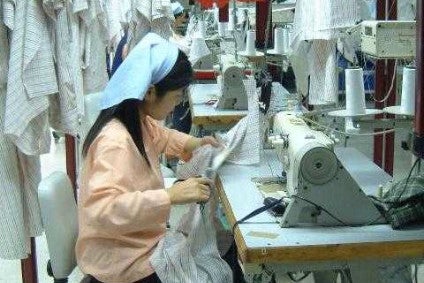
Manufacturing activity in China surged to a six-month high in June as the country continued to recover from the Covid-19 pandemic – but overseas demand remained subdued due to ongoing uncertainty in export markets.
The upturn in production was supported by the recent easing of measures related to the coronavirus outbreak, which enabled more firms to resume normal business operations and a general improvement in market conditions.
However, export work continued to fall amid reports of weak external demand. Nonetheless, business confidence rose to a four-month high, while firms expanded their purchasing activity at a quicker rate.
The easing of domestic restrictions saw the latest Caixin China General Manufacturing PMI (Purchasing Managers’ Index) rise from 50.7 in May to 51.2 in June – showing growth for the second month in a row. The above 50.0 reading signals an improvement in overall operating conditions.
The indicator provides a snapshot of operating conditions in the manufacturing economy and, though modest, the rate of improvement was the strongest recorded since December 2019.
Chinese manufacturers increased production for the fourth month running in June, as businesses continued to recover from company shutdowns and restrictions that were put in place earlier in the year due to the Covid-19 outbreak.

US Tariffs are shifting - will you react or anticipate?
Don’t let policy changes catch you off guard. Stay proactive with real-time data and expert analysis.
By GlobalDataAlthough the rate of output growth softened since May, it remained solid overall. A number of firms also linked the latest increase in output to rising new order volumes amid signs of firmer client demand.
Notably, total new orders expanded for the first time since January, albeit modestly. Underlying data indicated that stronger domestic demand predominantly boosted sales, as new export orders continued to decline.
Employment meanwhile remained on a downward trend in June, with staffing levels falling for the sixth month running.
As new orders increased, companies expanded their purchasing activity at a quicker pace in June. Though modest, the increase in buying activity was the joint-quickest since January 2018. Consequently, stocks of purchased items increased for the first time in six months. Inventories of finished goods meanwhile declined further, albeit at a fractional rate.
Survey data also pointed to a slight deterioration in vendor performance during June, as travel restrictions related to Covid-19 continued to impact logistics.
Average input prices increased for the first time in four months at the end of the second quarter. The rate of inflation was solid overall, with a number of companies mentioning that raw material costs had risen amid signs of firmer market conditions. However, selling prices rose only slightly as overall pricing power was restricted due to tough market competition.
Chinese manufacturers were generally confident that output would be higher than current levels in 12 months time. Furthermore, the degree of positive sentiment improved to its strongest since February. Firms linked upbeat forecasts to expectations that market conditions and demand will continue to recover.
“Overall, the manufacturing sector continued to recover in a post-epidemic period, and both supply and demand improved,” said Dr Wang Zhe, senior economist at Caixin Insight Group.
“Around mid-June, the epidemic flared back up in some parts of China, but its impact on the overall economy was limited. The gauge for future output expectations continued to rise in June, reflecting manufacturers’ confidence that there would be a further relaxation of epidemic controls and a normalisation of economic activities.
“Meantime, we should still pay attention to the pressure on employment. Top policymakers have repeatedly stressed the importance of expanding employment channels. For some time to come, increasing employment will remain an arduous task.”



